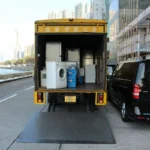A fireplace and chimney is a must-have for a cozy home. However, without proper maintenance, it can lead to major issues like chimney fires. After all, statistics show that 14,000 chimney fires happen annually in the US.
Regular maintenance also ensures efficient heating and improved lifespan of the fireplace and chimney. To enjoy these benefits, here’s everything you must do!
1. Schedule Regular Cleanups
The most common issue in fireplaces and chimneys is creosote (a flammable byproduct) buildup, which can lead to fires. So, ensure you clean them regularly.
However, the chimney and fireplace contain toxic substances. Hence, avoid doing it by yourself. It’s best to conduct professional inspections and cleaning by a well-reputed company with experience in chimney sweeps in Seattle.
Other than removing creosote buildup, they also check the chimney condition for damage, loose bricks, and cracks on the flue liner.
Schedule professional inspection at least once a year to ensure optimal working of the
2. Eliminate Draft Issues
An optimally functioning chimney must always have a strong draft. This helps push the smoke and gas upward and out of the home through the chimney.
If you notice smoke seeping into your living area or home interior, that’s a telltale sign of a chimney issue. Fix it ASAP to avoid major mishaps.
3. Mount A Chimney Cap
Chimney caps prevent wild animals, pests, and debris from entering your chimney. They also prevent rainwater and snow from seeping inside and further drain water away. Thus, it also prevents water damage to your chimney. So, install a chimney cap immediately.
If you already have one, frequently check whether it’s in its place. Strong wind and weather can often rip this cap off the chimney.
Also, notice whether the cap is rusty. Animals can often break through rusty caps. If the cap is worn off or missing, invest in another one.
4. Only Use Proper Burnable Material
In your fireplace, only burn dry, seasoned hardwood to ensure the highest efficiency and safety. This kind of wood has been dried for around 6 months (minimum). It produces more heat and less smoke, causing low creosote buildup.
Conversely, green, inadequately dried, or unseasoned wood produces high amounts of creosote and decreases chimney efficiency.

5. Control The Fire Size And Firewood Amount
Ensure the fire size is small and controlled for peak efficiency and extended lifespan. Use small amounts of wood at a time. This kind of fire is hotter and produces less smoke and creosote.
If you create a bigger fire or overload the fireplace with excess wood, it produces excessive smoke and creosote. This fire is less clean, i.e., it produces excess smoke, pollutants, and toxic byproducts.
6. Inspect Chimney Masonry
Regularly check the masonry of the chimney and fireplace. Monitor for cracks and loose mortar joints. Check the base, backing, and walls for flaking or spalling bricks. If there are obvious issues in the masonry, get it fixed ASAP.
If it’s good, coat the brick with a water repellent. This prevents water from seeping into the chimney. Cover the adjacent shingles using a tarp while applying the water repellent.
7. Monitor The Chimney Crown
Ensure the chimney crown isn’t cracked or the cement isn’t crumbling. Otherwise, it will let moisture seep in and reduce the chimney’s efficiency.
If the chimney crown shows signs of wear and tear, repair it with a crown sealer like a flexible elastomeric sealant. Clean the crown with a nylon brush and fill the cracks with 100% silicone caulk or patching cement.
8. Test The Damper
The chimney damper must close and open easily. Visually check whether it operates properly. If it’s stuck or difficult to operate, it might be rusty – a sign of moisture.
Next, check whether you can hear or feel any air when it’s closed. If you do, that’s another sign of a malfunctioning damper.
Lastly, check if the damper seals properly. If not, it’s warped, or debris has accumulated, which prevents the closing.
9. Check For Moisture And Water Damage
Other than seeing water, some signs of moisture invasion or water damage are:
- Sounds of water dripping
- The musty smell of mold and mildew
- Water stains in the firebox
Check for these signs after heavy rains and address all issues immediately.
Conclusion
With these thorough tips, you will enhance the functionality of the fireplace and chimney, enhance their lifespan, ensure safety, and keep your home warm. So, work on them now to enjoy a cozy life!





